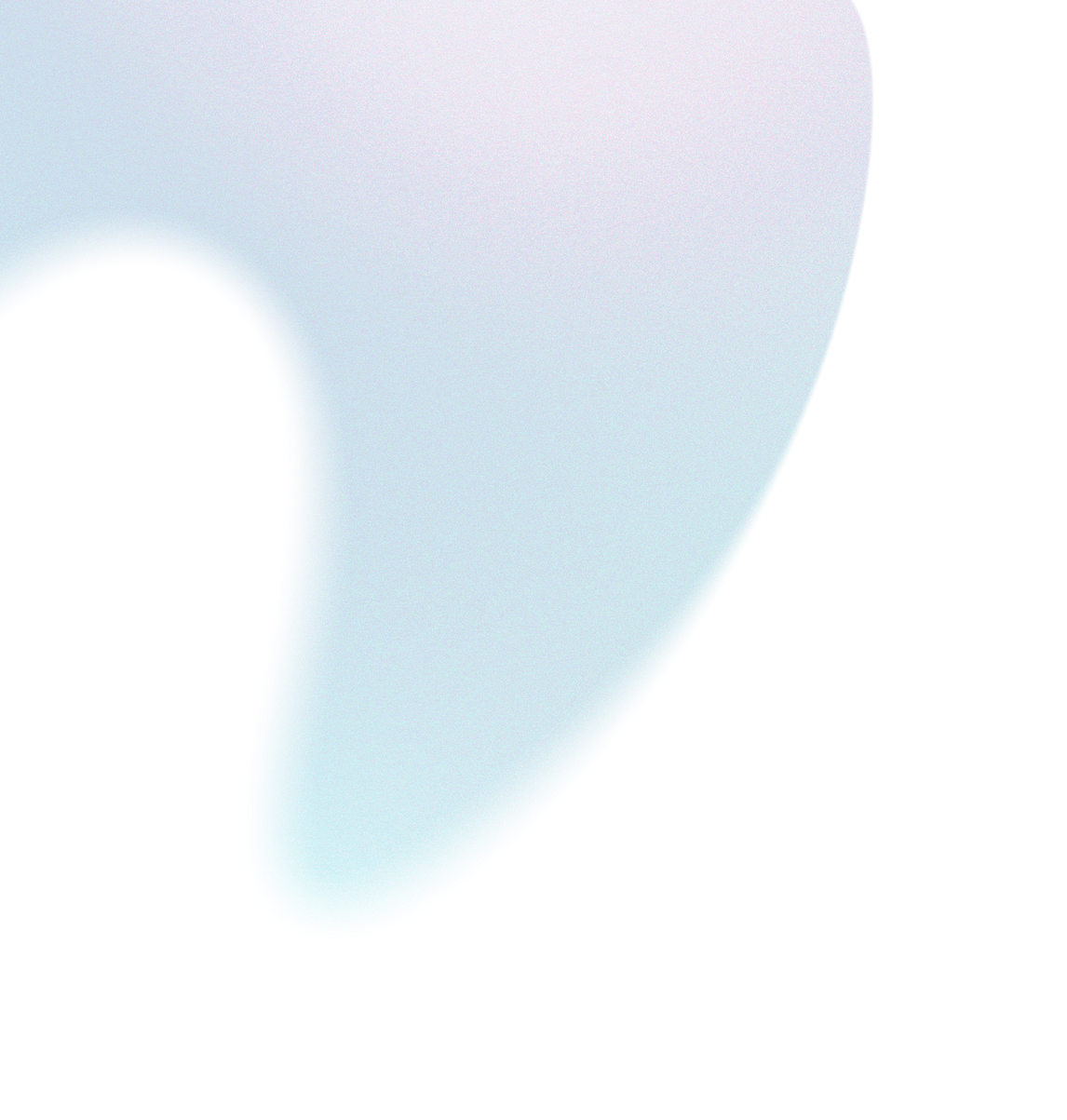Chapter 4: 4 Basic Email Flows To Retain More Customers
In Part 3, you learned the basics of email marketing automation, as well as the email flows to acquire more customers for your ecommerce business. Now in this guide, you’ll learn the four email flows to retain your existing customers....
Tags
Tools
Level
Related Partners

In Part 3, you learned the basics of email marketing automation, as well as the email flows to acquire more customers for your ecommerce business.
Now in this guide, you’ll learn the four email flows to retain your existing customers.
It’s much cheaper to retain an existing customer than acquire new potential customers — in fact, 80% of sales for online stores are likely coming from just 20% of their customers: returning customers.
This guide will focus on how to leverage email marketing automation after a customer makes a purchase. These four email flows will help you drive more automated revenue to scale your ecommerce business sustainably.
If you’ve wanted to accomplish goals such as getting more repeat customers, win back lapsed customers, retain loyal customers or increase customer satisfaction… these are the email automations you’ll need!
Using Automated Emails To Retain More Customers
These are the top 4 email flows you need to retain more customers, increase your customer lifetime value, and drive more sales from repeat customers:
- Post-Purchase Nurture Flow
- Cross-Sell Flow
- Replenishment Flow
- Winback Flow
Leveraging email marketing automation is one of the highest returns on investment (ROI) ways to drive revenue from your existing customer base because they target each stage of the customer’s journey after they make a purchase.
We’ll use the popular e-commerce brand Frank Body throughout this guide as an example of a typical e-commerce customer journey.
In this case, this is the typical journey customers take after making a purchase that automated email workflows can target:
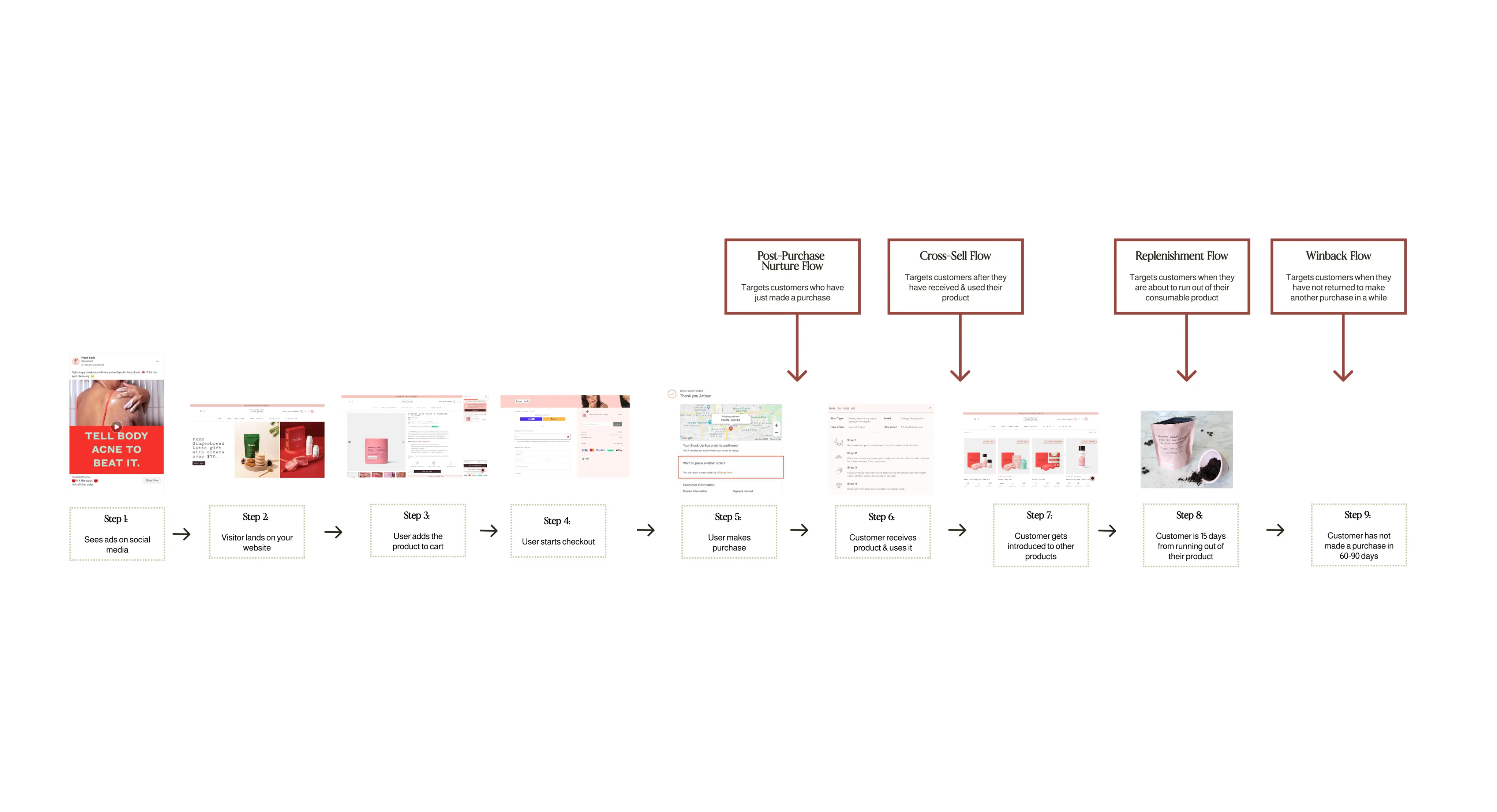
Each flow engages with a person based on whether they need to be nurtured and educated with valuable content or they are a warm buyer with the opportunity to make a next purchase.
For example, a winback email automation is sent to previous customers who have not made a purchase in a significant amount of time. Winback emails are a type of re engagement email targeting customers your online store is at risk of losing.
Building An Automated Email Marketing Strategy To Retain Customers
Before you get started in building a plan, you want to start by asking yourself and your team one important question that will be the foundation of your email automation ecommerce retention strategy:
For example, are new customers not understanding how to use their product once they receive it? Or are customers loving your product but are unsure of other products on your store they may like?
Next, you’ll follow these key steps to building your email automation strategy to retain more customers:
1. Start by planning out each of the flows you will build in priority order. You’ll want to prioritize the flows that target your most important business goals first.
2. Plan: Determine the number of emails each of your flows will have. This is an important step to ensure you and your team can execute on creating each of these emails.
3. Flow Mapping: Build a flow map to determine the number of emails, key objective for each email & when they should be sent out to the customer
4.Execute: Start creating emails! We recommend using an email brief to develop an overview for each email before writing copy and designing the emails in order to save time.
You can also use an email strategy automation tool like Backbone’s Flow Recommendation Tool, which will recommend the flows you need to build each month for your business to drive the most sales, customized to your industry, goals & business size
2. Post-Purchase Nurture
What Is A Post-Purchase Nurture Flow?
A Post-Purchase Nurture Flow is a series of automated emails that thank recent purchasers & educate them on how to get the most of your products.
This ensures they have a great experience of your brand and products, so they return to make future purchases.
Here is a typical customer journey before they receive the automated emails from a Post-Purchase Nurture Flow:
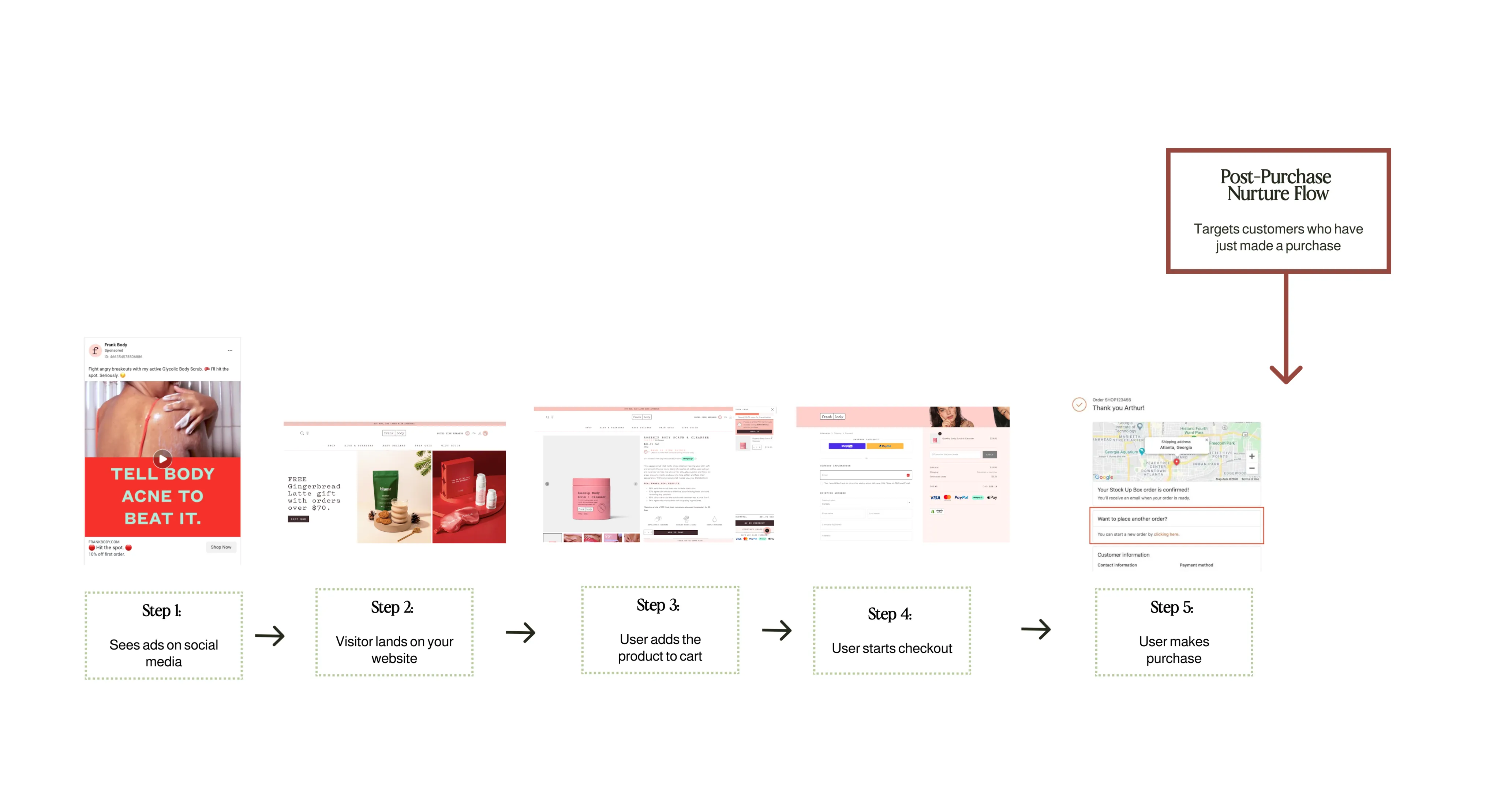
Your post-purchase email automation helps you build a relationship with your customers & ensure they have a good impression of your brand by providing them with personalized content, such as thank you messages, product tips and tricks, and exclusive offers.
The Customer Journey Of Your Post-Purchase Nurture Flow
Unlike welcome emails, which speak to people who are just getting to know your business and products, your Post-Purchase Nurture Flow is targeting customers who have already made a purchase. So you’re looking to provide customers with relevant content and support to help drive future purchases and build customer loyalty.
A successful post purchase follow up is designed to create long-term customer relationship.
Therefore, it’s important to ensure that your post-purchase nurture emails provide customers with a positive experience, so they can remain engaged even when they may not be ready to buy again yet.
Your transactional emails will also play an important role throughout this journey to keep customers updated on the status of their order with shipping notifications and other relevant messages.
When building your Post-Purchase Nurture flow, keep in mind where customers are in their post-purchase journey:
• They just made the purchase
• They’re waiting for their order to be fulfilled or shipped
• Their order has been shipped & they’re waiting for it to arrive
• Their order has just arrived
• They’ve used the product for a while already
Keep customers engaged throughout their journey by leveraging email marketing automation to deliver content such as educational and entertaining material, help articles, upsells and cross-sells, product recommendations, surveys and polls that are personalized to each customer based on their purchase history and interests.
A Successful Post-Purchase Nurture Flow
A successful post-purchase flow that builds customer loyalty will:
1. Thank customers for making a purchase
Show your appreciation for your customers & also use this as a chance to share more about your brand story, mission or values.
2. Get customers excited to receive and use your product
Build excitement by sharing more information about the product they bought & the benefits they can expect. This can include content such as before/after pictures of other customers, testimonials, or inspiration on how to style/wear their product (for fashion, home decor & beauty products).
3. Educate customers on how to use the product
Be sure to provide instructions & helpful resources for products that buyers may need a bit more guidance to use (eg. electronics, meal kits), or how to set up (eg. furniture).
4. Guide customers throughout the journey of waiting for their product to arrive
A lack of relevant updates for a customer on where their product is, whether their order has been processed, and when they can expect it to arrive can quickly turn an excited customer into a frustrated one… and they haven’t even gotten to use the product yet! Leverage email automation to provide these targeted messages at each stage of the customer journey.
5. Include segmentation & personalized engagement emails based on their interests & purchase history
Sharing tips to solve problems or tackle challenges that your target audience is likely facing, such as Workouts For Upper Body Strength for a fitness company, or Guide To Building Your 5-Minute Skin Care Routine for a skin care company can go a long way in building customer loyalty.
To measure the success of your flow, the key Post-Purchase Flow metrics you want to look at are:
• Open & click rates: How engaged customers are with your emails
• Repeat purchase rates: How often are happy customers returning to make future purchases
Lastly, your post-purchase nurture flow can also help you acquire valuable customer feedback that can be used to improve your business and the overall customer experience.
Your Post-Purchase Nurture Flow can also support with advanced goals & KPIs such as reducing returns, cross-sells, upsells to subscriptions & increasing customer lifetime value.
Building A Post-Purchase Nurture Flow
A Post-Purchase Nurture Flow can have over 10 emails and it will vary greatly for each brand, since different brands will need to educate and nurture their customers differently.
However, successful post-purchase follow up emails typically include a variety of content, such as educational tips, brand education, blog roundups, and product education. It can also include customer feedback opportunities, thank you letters, customer service check-ins, product recommendations, upsells and cross-sells.
Here are a few types of common post purchase follow up emails to include in your flow:
Email Type #1: Thank You
This is your chance to make a good impression and let customers know how much you value their business. You can also use this as a chance to get them to follow you on social media, join your Facebook group or read your blog. Many ecommerce stores will also include a letter from the founder/CEO to make it more personal.
Here is an example of a custom generated email layout for a thank you Post-Purchase Nurture email from Backbone for an ecommerce company:
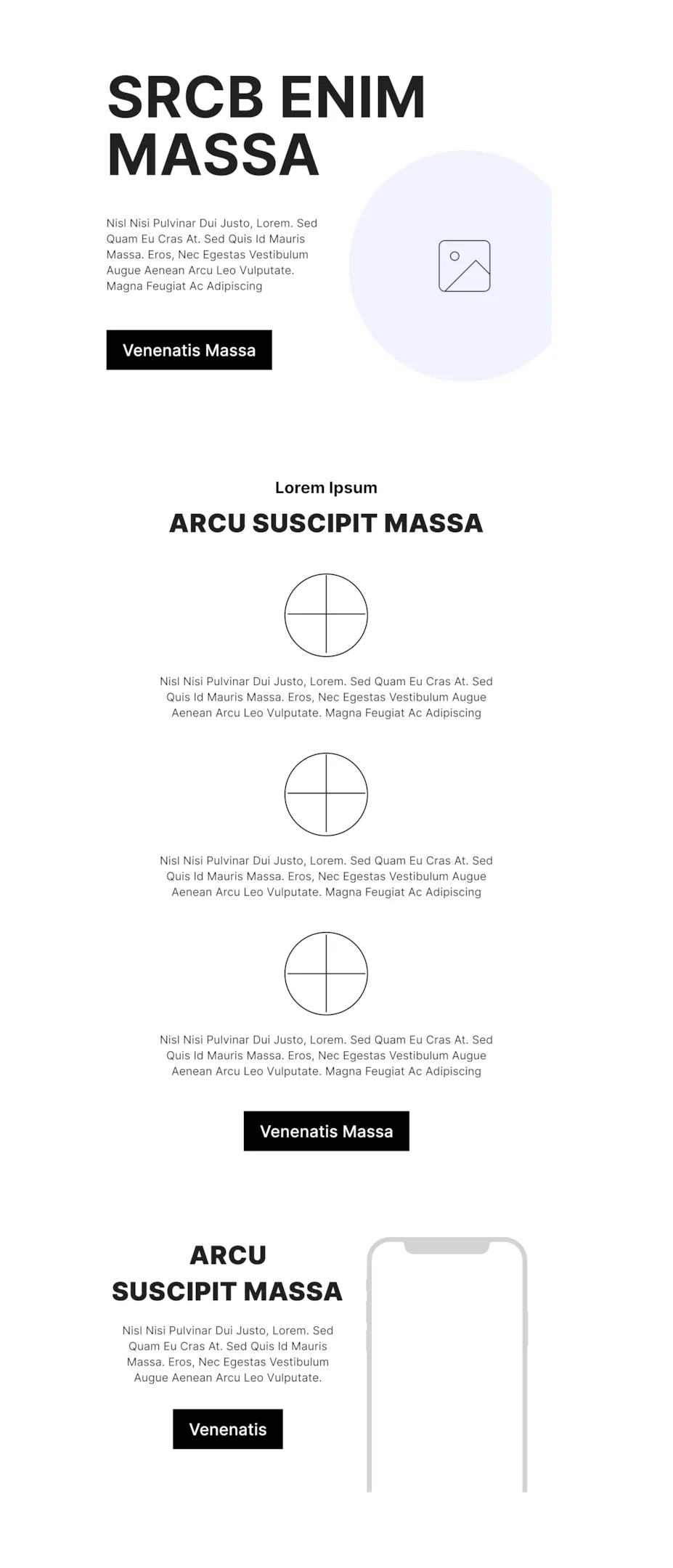
Building An Automated Email Marketing Strategy To Acquire Customers
Follow up with product tips and tricks to teach customers how to get the most out of it. If you have a product that customers will need to learn how to use such as electronics, wearables or home/kitchen equipment, use this as a chance to share helpful guides, tutorials or videos. Online stores selling clothing, jewelry, makeup or other similar products can show customers inspiration on how to style their outfits or makeup looks.
Here is an example of a custom generated email layout for a product education Post-Purchase Nurture email from Backbone for an ecommerce company:
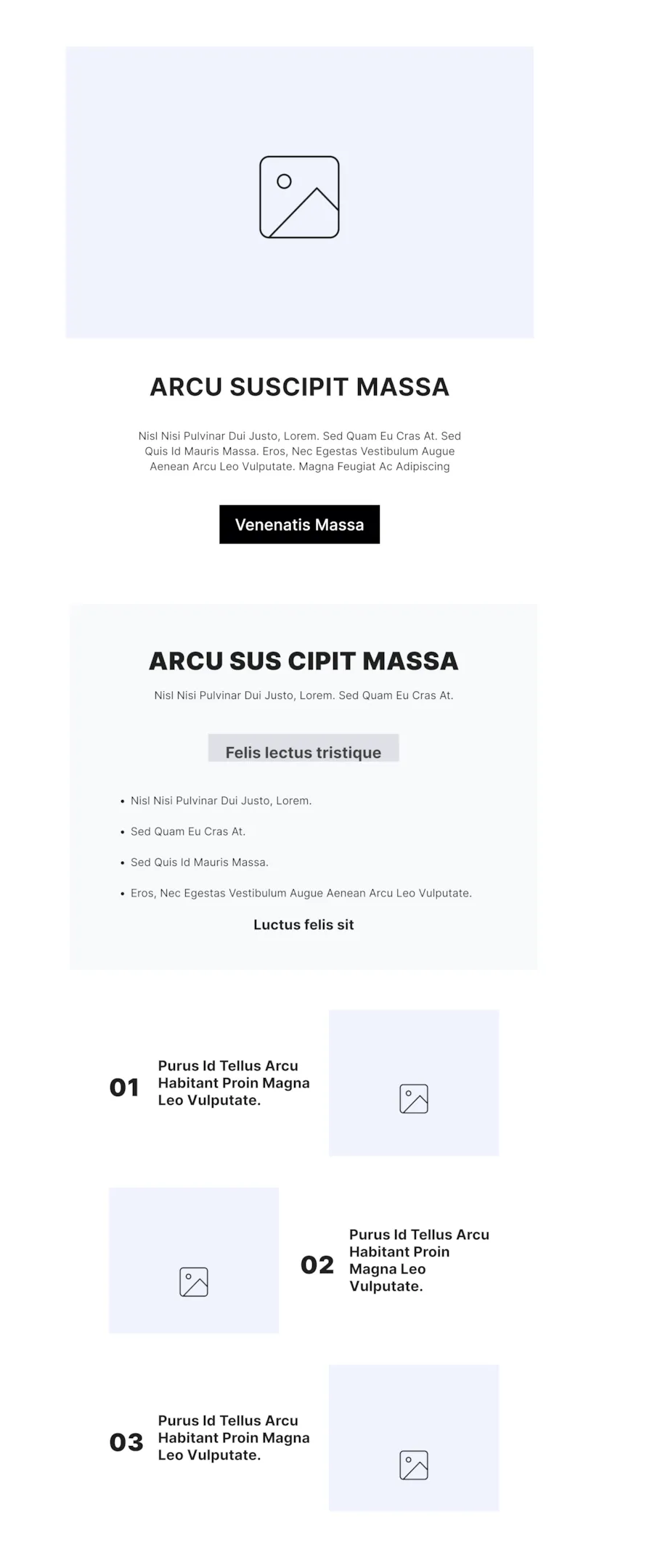
Email Type #3: Content
Take your relationship with customers one step further by sending engagement emails that just share content they’d be interested in. Examples are:1. Knowing Your Skin Type Guide for skin care or makeup ecommerce stores2. Tips on how to brew coffee at home for coffee or beverage ecommerce stores3. Color palette inspiration for your kitchen for home goods ecommerce stores
Here is an example of a custom generated email layout for a content Post-Purchase Nurture email from Backbone for an ecommerce company:
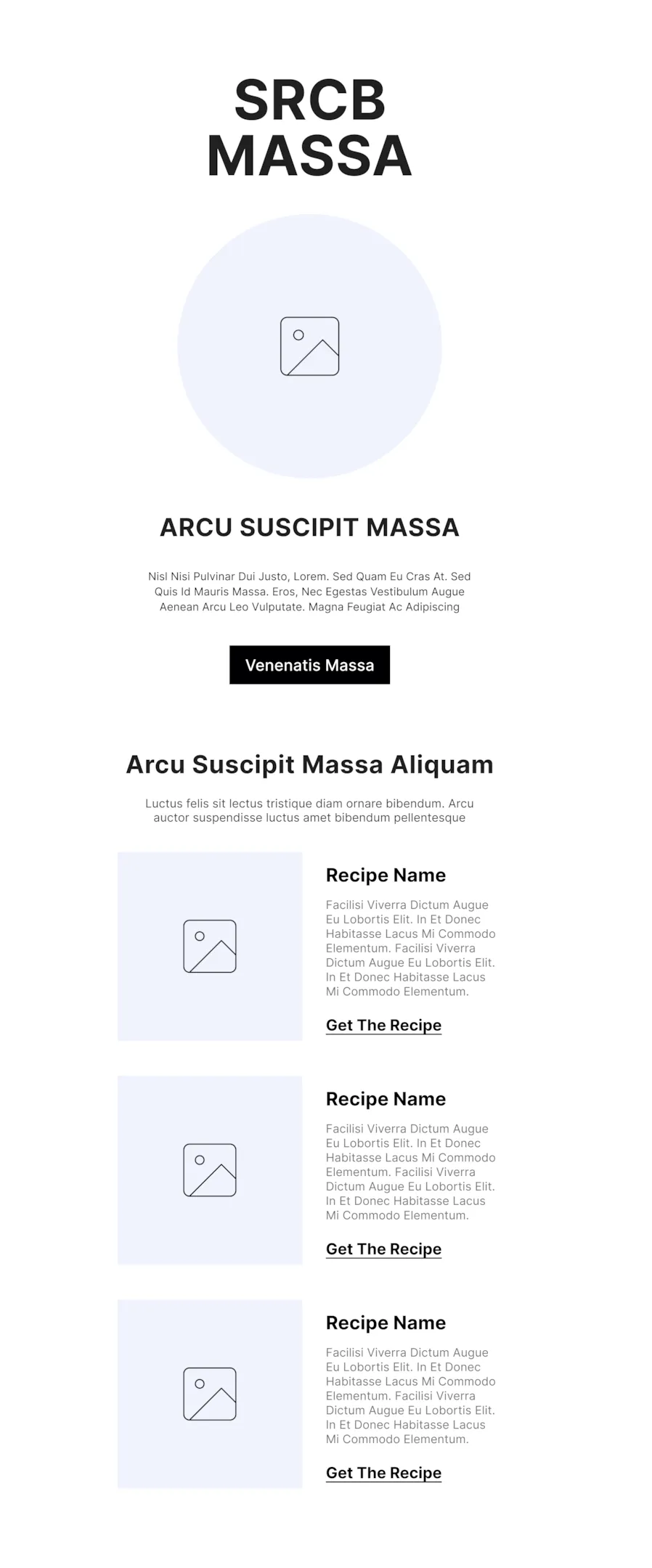
For a more in-depth guide on building a successful Post-Purchase Nurture flow, including recommended types of post-purchase nurture emails based on your industry & how to set up a Post-Purchase Nurture Flow in your email service provider, see our Advanced Guide To Building A Post-Purchase Nurture Flow
Post-Purchase Nurture Email Examples



For more examples of Post-Purchase Nurture Emails, see our Post-Purchase Nurture Email Examples Catalog.
3. Cross-Sell Flow
What Is A Cross-Sell Flow?
A Cross-Sell Flow is an automated email series that promote other products to customers or upsell them to higher priced products. It is an effective and important method for ecommerce stores to drive revenue and increase customer lifetime value.
Here is a typical customer journey before they receive the automated emails from an Cross-Sell Flow:
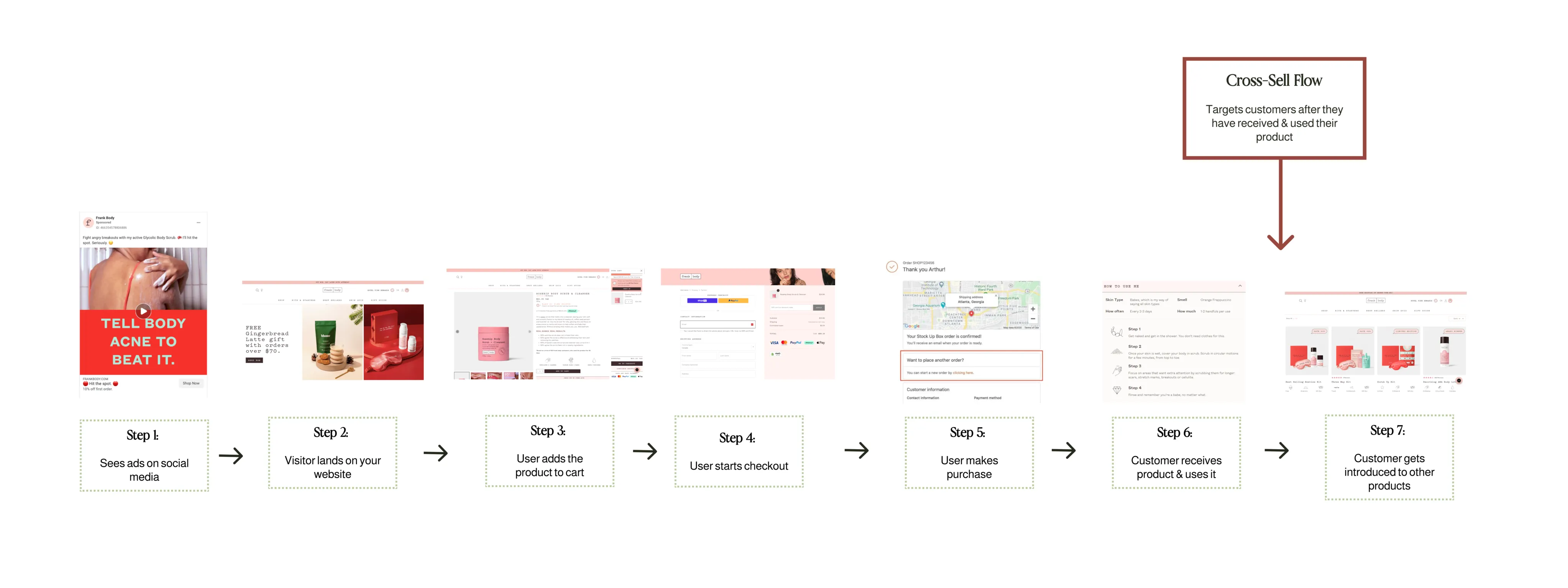
These cross-sell emails help customer save time & make their next purchase by providing them with personalized recommendations on other products they’ll love based on their purchase history and interests.
The Customer Journey Of Your Cross-Sell Flow
A successful cross-sell flow that gets customers to make another purchase will:
1. Introduce customers to new products with personalized recommendations
You want to make sure you’re recommending new products that they have a high-likelihood to be interested in. This may be based on a variety of factors such as products that are similar styles, colors or scents. It can also be products that solve the same pain point or are within an appropriate price range.
2. Introduce customers to new products with personalized recommendations
A common mistake online stores make is just providing a discount for a new product without telling them why they should want the new product. When introducing new products to customers, treat them like new subscribers who need to be educated and sold on the product.
3. Provide additional discounts or incentives
Most online stores will provide coupon codes for 10% or 15% off to allow customers to try a new product at a discounted price. You can also incentivize customers with offers such as a free product with purchase to drive more sales.
To measure the success of your flow, the key Cross-Sell Flow metrics you want to look at are:
1. Open & click rates: How engaged customers are with your emails
2. Repeat purchase rates: How often are happy customers returning to make future purchases
3. Avg. # of products customers buy: How many different types of products are customers purchasing from you?
Your Cross-Sell Flow can also support with advanced goals & KPIs such as increasing product adoption, upsells to subscriptions & increasing customer lifetime value.
See our Advanced Guide To Building A Cross-Sell Flow to see more advanced metrics to review to measure the success of your Cross-Sell Flow.
Building Your Cross-Sell Flow
A Cross-Sell Flow can have over 10 emails and while it will vary greatly for each brand, successful cross-sell emails typically recommend products in a few different ways.
Here are a few types of common cross-sell emails to include in your flow:
Email Type #1: Specific Product Recommendation
This is when you recommend a specific product that either supplements (ie. further helps them solve their pain point) or complements (ie. helps them get more value out of their previous purchase). It should highlight the product(s) that you’re recommending & explain how it is related to their previous purchase.
Here is an example of a custom generated email layout for a product education Post-Purchase Nurture email from Backbone for an ecommerce company:

Email Type #2: Product/Collection Round-Ups
This is when you’re simply nudging the customer to browse on the store again & may provide a few suggestions. This type of ecommerce email is most common with fashion or beauty brands where you’re recommending other styles, colors or scents they might be interested in.
Here is an example of a custom generated email layout for a product education Post-Purchase Nurture email from Backbone for an ecommerce company:

Email Type #3: Product BUNDLE UPSELL
This is when you’re upselling a customer to higher priced product bundles that may include the product they’ve already purchased and new products from other categories. This type of ecommerce email is most common with health, wellness, beauty & skin care brands.
Here is an example of a custom generated email layout for a product education Post-Purchase Nurture email from Backbone for an ecommerce company:
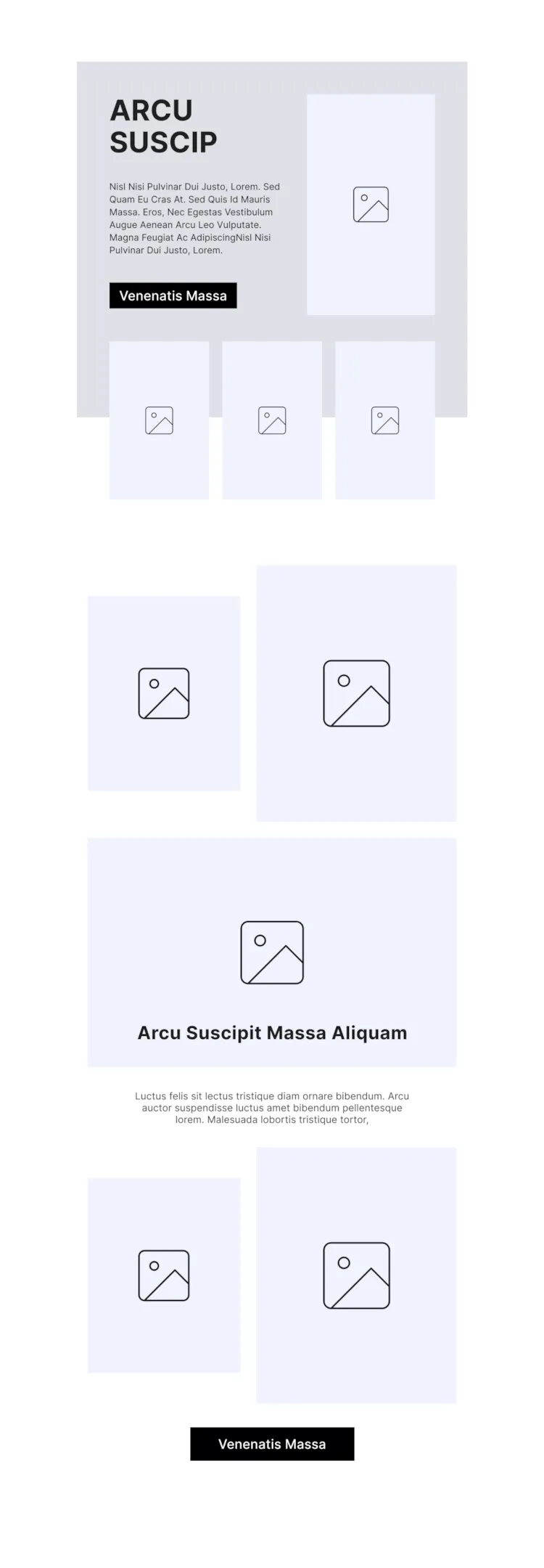
For a more in-depth guide on building a successful Cross-Sell flow, including recommended types of cross-sell flow emails based on your industry & how to set up a Cross-Sell Flow in your email service provider, see our Advanced Guide To Building A Cross-Sell Flow
Cross-Sell Email Examples


For more examples of Cross-Sell Emails, see our Cross-Sell Email Examples Catalog
What Is A Replenishment Flow?
A Replenishment Flow is an email automation series that helps ecommerce businesses remind their customers to repurchase certain items. This type of flow is typically used for consumable goods, such as cosmetics and beauty products to groceries and pet supplies.
NOTE: A Replenishment Flow is different from a Cross-Sell Flow because the latter focuses on getting a customer to try a new product, while the former is getting a customer to re-purchase a product.
Here is a typical customer journey before they receive the automated emails from a Replenishment Flow:
NOTE: A Replenishment Flow is different from a Cross-Sell Flow because the latter focuses on getting a customer to try a new product, while the former is getting a customer to re-purchase a product.
Here is a typical customer journey before they receive the automated emails from a Replenishment Flow:
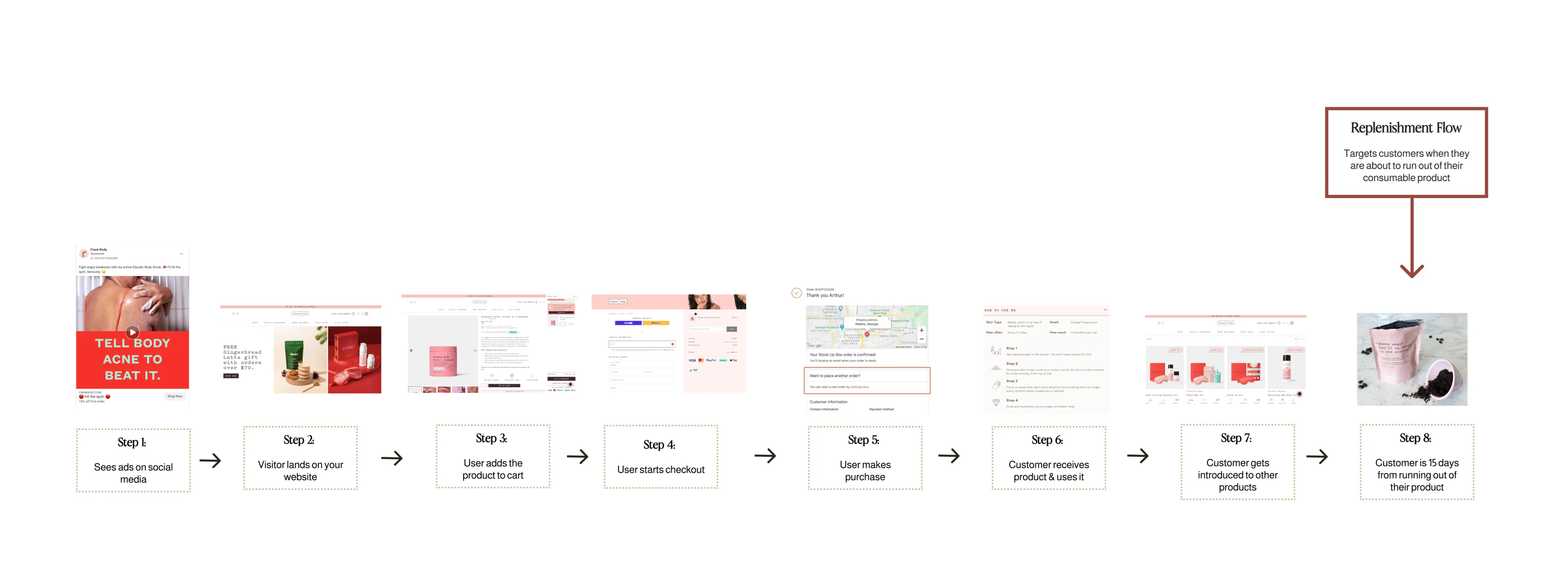
By setting up a replenishment flow, you can keep your customers informed about their favorite items and the best times to buy them. Plus, it’ll help reduce customer churn and increase customer loyalty.
The Customer Journey Of Your Replenishment Flow
A Replenishment Flow is a form of re engagement emails that target customers who have used your product, are likely running out of it soon & will need to refill.
The goal of the flow is to get them to re-purchase a product they’ve already tried.
When building your Replenishment Flow, you need to do is decide what products your customers should be reminded about, how quickly they’ll be using up those products to determine how often they should receive those reminders, and when those reminders should go out.
A successful Replenishment Flow may even upsell customers to starting a subscription for their favorite products to save time.
A Successful Replenishment Flow
A successful replenishment flow will:
1. Remind customers to replenish their product at the right time
By automating the reminders to repurchase, you can ensure that customers are reminded of your products right time. Plus, it gives them a gentle nudge so they don’t run out of their favorite items. Often a good strategy can also be to remind them of benefits of using the product often. For example, if you’re a supplement company that sells collagen powder, you can include testimonials from customers who have been using your power for months (or even years!) to convince customers to re-purchase.
2. Upsell customers to start a subscription
You can help customers save time by upselling them to start a subscription so they don’t have to remember to repurchase their favorite products every time they run out. It’s also a great way to ensure recurring revenue for your online store.
3. Recommend other products they may like
You can increase your average order value by suggesting add-ons or other products that customers may want to add to their order as they’re re-purchasing the products they love. Some online stores even provide discount codes or a free product to try when customers replenish their favorite products.
To measure the success of your flow, the key Replenishment Flow metrics you want to look at are:
1. Open & click rates: How engaged customers are with your emails
2. Repeat purchase rates: How often are happy customers returning to make future purchases
3. % of subscription customers: How many customers have joined a recurring subscription for their products
Your Replenishment Flow can also support with advanced goals & KPIs such as increasing average order value, increasing product adoption & increasing customer lifetime value.
See our Advanced Guide To Building A Replenishment Flow to see more advanced metrics to review to measure the success of your Replenishment Flow.
Building A Replenishment Flow
A Replenishment Flow should typically have at least 3 emails sent at these intervals:
1. Email #1: 5-7 days before refill needed
2. Email #2: 0 days before refill needed
3. Email #3: 5-7 days after refill needed
Generally, it is best to start with one email and then gradually increase the frequency and complexity of the sequence as needed. It is usually recommended that you aim for no more than five emails in your replenishment flow.
PRO TIPS: Your “refill needed” day is based on your product. For example, if a customer purchases a supplement that has a 30-day supply, then the first email should be sent 23-25 days after purchase.
Replenishment Email #1:
The follow up email is for customers who are not completely sold on purchasing the products they added to their cart.
Your second add to cart email will be similar to the first one, except it may also include elements such as:
• Reviews of your product from other customers
• Additional perks to reduce buyer friction (eg. satisfaction guarantee, free shipping, free returns, warranty, payment plans)
• Additional information about your brand & what makes it unique
• Recommendations for a product bundle or other products the customer make like based on their browsing or purchase history
Here is an example of a custom generated email layout for an Add To Cart Email #2 from Backbone for an ecommerce company:

Replenishment Email #2:
Remind them why they purchased the item in the first place, mention any relevant discounts or promotions, and thank them for their loyalty. Make sure to also include content that is personalized to the customer such as their name, items they have previously purchased, or special offers that may be relevant to them.
Your last two emails will be more direct promotional emails to engage these potential customers, by including elements such as:
• Reminders of perks (eg. free shipping, 30-day satisfaction guarantee)
• More in-depth testimonials or before/after stories of customers who continued using the product
• Personalized recommendations for other products the customer make like
• Upsell to a subscription
Here is an example of a custom generated email layout for a product education Post-Purchase Nurture email from Backbone for an ecommerce company:
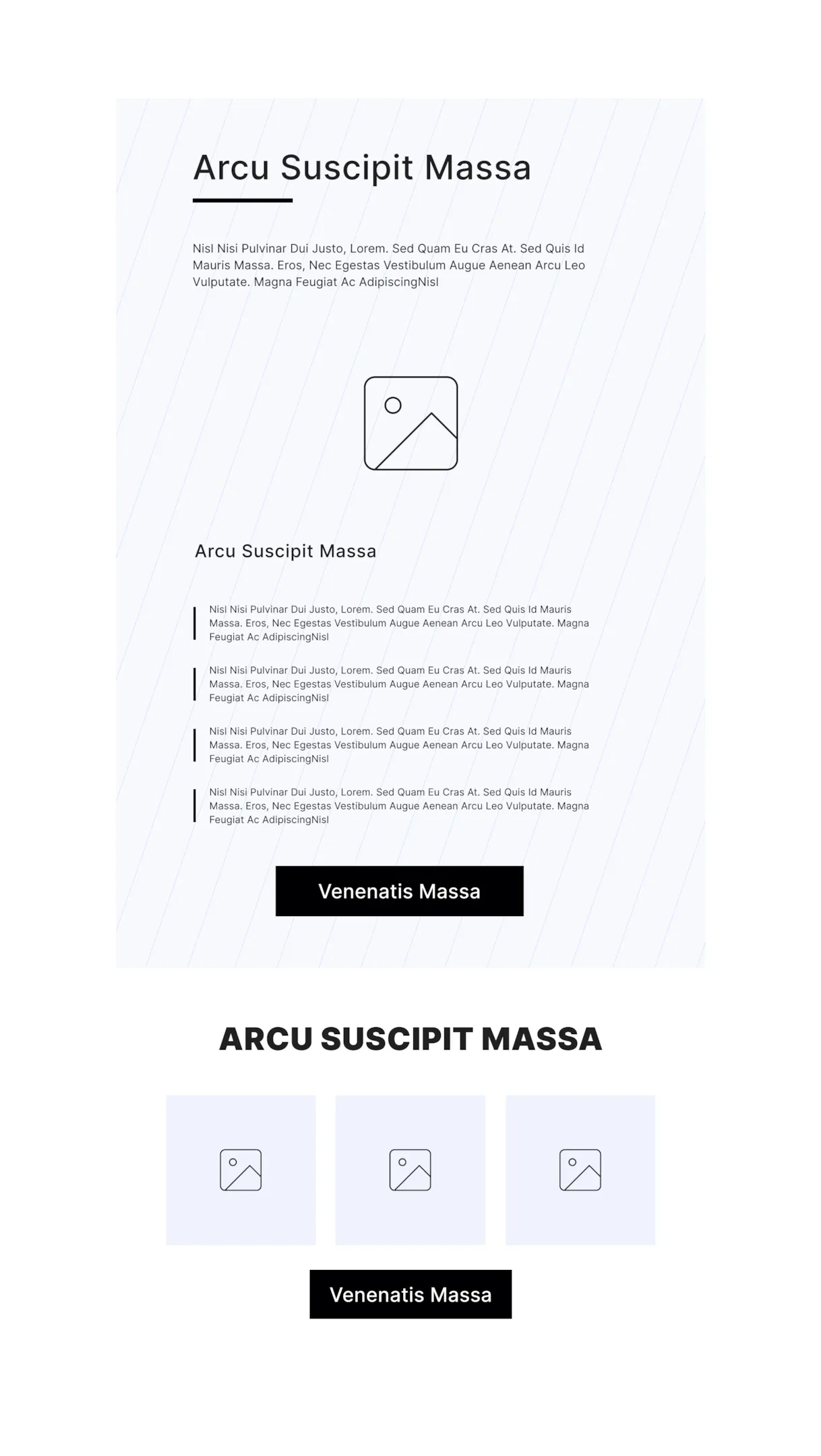
Replenishment Email #3:
Your final replenishment reminder is often a more direct re-engagement email with an offer or incentive to get them to repurchase.
To engage these customers before they churn, you can include elements such as:
• An offer such as 10% off their order, a free product with purchase, or free shipping
• Reminders of perks (eg. free shipping, 30-day satisfaction guarantee)
• Reviews of your product from other customers
• Personalized recommendations for other products the customer make like
Here is an example of a custom generated email layout for a product education Post-Purchase Nurture email from Backbone for an ecommerce company:
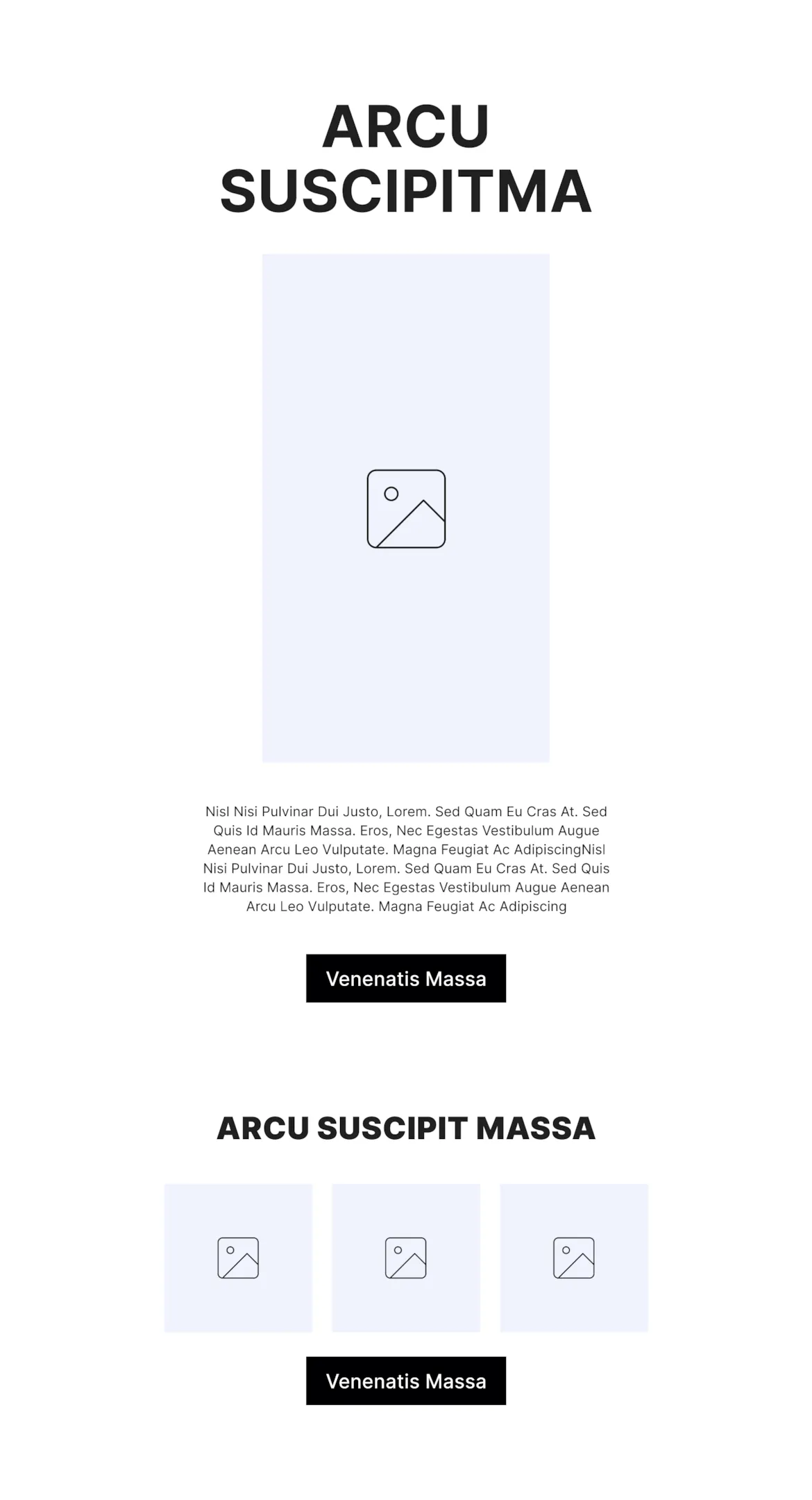
For a more in-depth guide on building a successful Replenishment flow, including recommended types of replenishment emails based on your industry & how to set up a Replenishment Flow in your ESP,
see our Advanced Guide To Building A Replenishment Flow
Replenishment Flow Email Examples


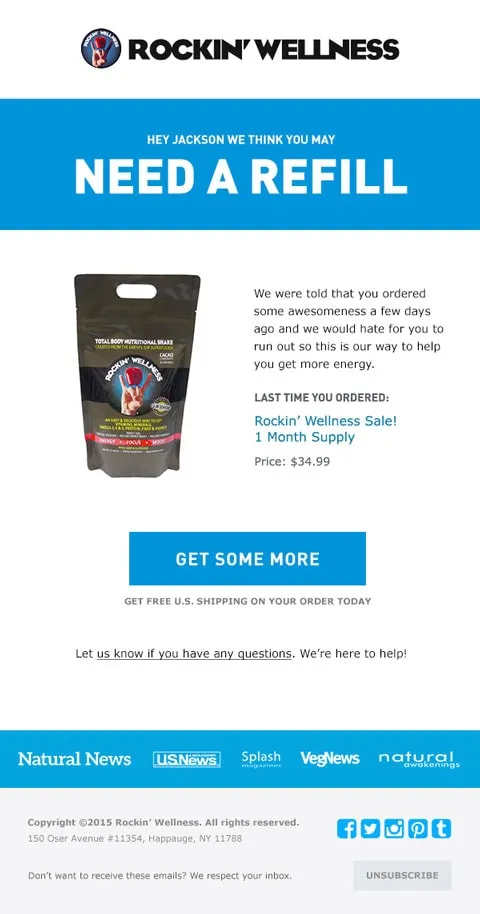
For more examples of Replenishment Flow Emails,
see our Replenishment Flow Email Examples Catalog
3. Winback Flow
What Is A Winback Flow?
A Winback Flow is an email automation series designed to win back lapsed customers who have stopped buying from your ecommerce store.
Here is a typical customer journey before they receive the automated emails from a Winback Flow:

For most ecommerce stores, it’s 5x cheaper to retain an existing customer than acquire a new one, so a winback flow is a critical part of growing your ecommerce company.
By sending personalized emails with offers and incentives tailored specifically to inactive customers, you can encourage them to come back and shop with you again. It’s a great way to increase sales and customer loyalty – not to mention putting a smile back on those lapsed customers’ faces.
The Customer Journey Of Your Winback Flow
Unlike most of your flows which speak to people who have taken an action (ie. entered their email in an opt in, made a purchase, viewed a product), a Winback Flow is targeting customers who have not taken an action in a long time: making a purchase.
A successful Winback Flow is designed to re-engage and win back these lapsed and churned customers.
With the right incentives, you can make these inactive users & customers feel valued and get them to come back and shop with you again.
When building your Winback Flow, keep in mind where lapsed customers are in their journey:
• They previously made a purchase or even multiple purchases
• They’ve used your product
• They’ve likely received multiple replenishment or cross-sell emails already
• They have not returned to purchase in a while.
A Successful Winback Flow
Overall, a winback flow is an effective way to increase sales, boost customer loyalty and remind inactive customers why they should shop with you again.
A successful winback flow should be tailored to the individual customer. The emails should contain personalized content that is relevant to the customer, such as exclusive offers and discounts.
Additionally, the timing of when you send out these emails can have a huge impact on their success – for instance, if you wait too long after someone has become inactive before sending out the winback email, they may have already moved on to another store.
A successful winback flow will:
1. Provide personalized recommendations of products they will like
You want to make it as easy as possible for these lapsed customers to make a next purchase, so remind them of products they’ve previously loved or recommend new ones for them to try.
PRO TIP: REPEAT is a powerful tool to allow you to send an automated email with their cart pre-filled with their favorites, to give customers an easy purchase experience.
2. Incentivize lapsed customers with a discount
Since these customers will have received lots of reminder and cross-sell emails, most online stores provide a high discount to save on their next purchase in order to win these customers back.
To measure the success of your flow, the key Winback Flow metrics you want to look at are:
• Open & click rates: How engaged these lapsed customers are with your emails
• Win back rate: How often are these lapsed customers returning to make a next purchase
• Website visits: How many lapsed customers are interested enough to revisit your store
Your Winback Flow can also support with advanced goals & KPIs such as reducing churn rate, increasing average # of purchases, and increasing customer lifetime value.
See our Advanced Guide To Building A Winback Flow to see more advanced metrics to review to measure the success of your Winback Flow.
Building A Winback Flow
A Winback Flow should typically have at least 2 emails sent at these intervals:
Email #1: 60-90 days after their last purchase
Email #2: 3-5 days after Email #1
Generally, it is best to start with one email and then gradually increase the frequency and complexity of the sequence as needed. It is usually recommended that you aim for no more than five emails in your winback flow.
Winback Email #1:
Email #1 is generally the announcement of your win back offer. It can be kept extremely simple & short to focus on creating urgency to claim the offer.
This email can include elements such as:
• An eye-catching header reminding them of the offer & that it is ending soon
• A clear call-to-action button to shop
• An FAQ-style email to address specific objections on a product/category
• Product catalog email to introduce other products they haven’t tried
• A social proof focused email showing testimonials or UGC
Here is an example of a custom generated email layout for a product education Post-Purchase Nurture email from Backbone for an ecommerce company:

Common elements into include in this win back email are:
• Personalized subject lines that mention the offer
• A bold header announcing offer such as 20% off their next order
• A clear call-to-action button to shop
• Key Brand USPs
• Satisfaction guarantee/warranty, free shipping & returns
Winback Email #2:
Email #2 is generally announcing that the offer is ending soon & recommending specific products to help customers decide what to purchase next.
This email can include elements such as:
An eye-catching header reminding them of the offer & that it is ending soon
A clear call-to-action button to shop
An FAQ-style email to address specific objections on a product/category
Product catalog email to introduce other products they haven’t tried
A social proof focused email showing testimonials or UGC
Here is an example of a custom generated email layout for a product education Post-Purchase Nurture email from Backbone for an ecommerce company:
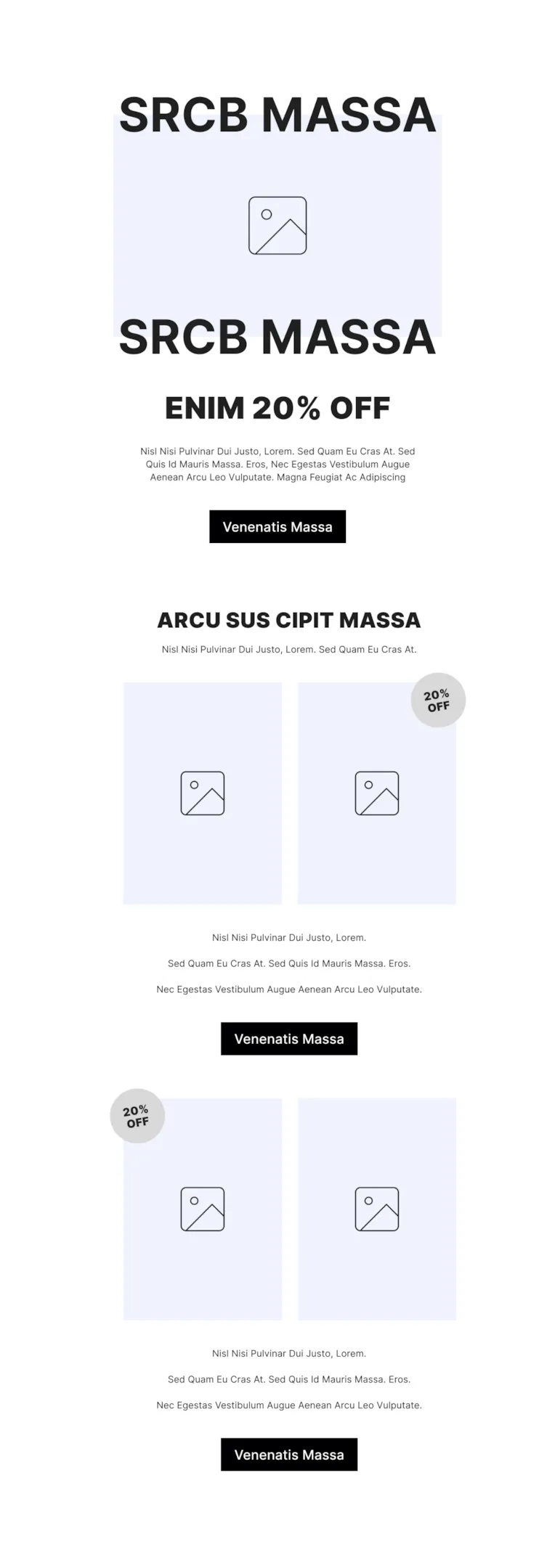
For a more in-depth guide on building a successful Winback flow, including recommended types of winback flow emails based on your industry & how to set up a Winback Flow in your email service provider, see our Advanced Guide To Building A Winback Flow
Winback Email Examples
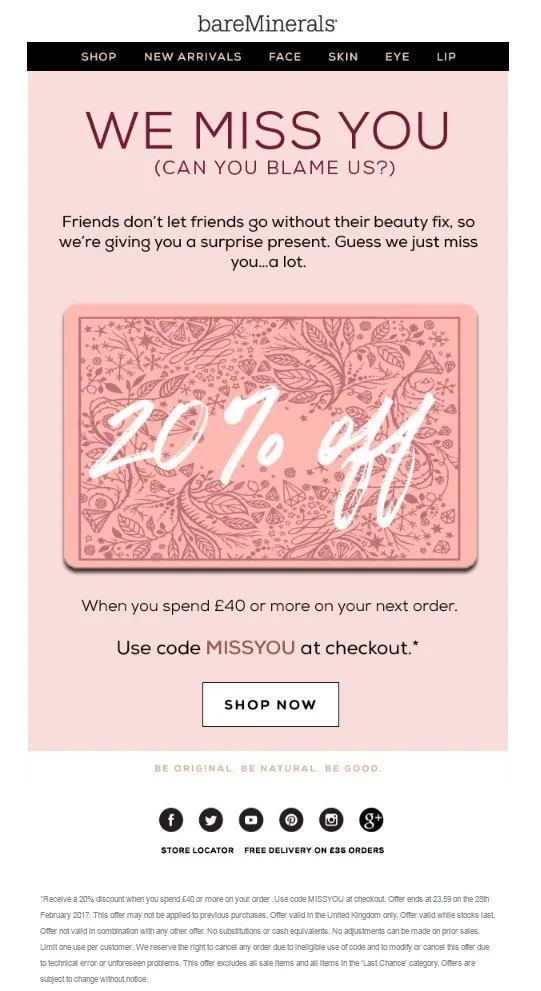


For more examples of Winback Emails, see our Winback Email Examples Catalog
A white-glove service built for success.
We've planned every part of your client experience so you know you're in good hands.
Related Posts

Discount Offer Flow
The Discount Offer Flow converts more email subscribers into customers by sending them a compelling, limited-time promotion to create a sense of urgency. It drives sales by targeting those who need just a little nudge to take action.What’s A Discount Offer Flow?A Discount Offer flow is a series of emails targeting email subscribers who have been on your list for a while. These subscribers have gone through the Welcome Flow & received campaign emails, but still haven’t converted. This gives them a higher discount to get them to make their first purchase and try your product.# Of Emails: 3Flow Length: 3-7 daysWhat’s the goal of a Discount Offer Flow?To get email subscribers who joined the list 60 days ago to convert into customers.Increasing the non-purchaser conversion rate (ie. % of customers who join the list as non-purchasers to become purchasers)Reducing the time to first conversion (ie. the amount of time it takes someone to go from being aware of the brand to becoming a customer)Increasing the $/lead (this can be from increasing the % of customers who convert or increasing the AOV per customer)Discount Offer Flow EmailsAll emails in the Discount Offer flow are structures similar to a promotion campaign series:Email #1: Offer AnnouncementA promotion...

Mastering the Art of Email Marketing: Best Practices for Success
Email marketing is one of the essential marketing channels that every direct-to-consumer (DTC) e-commerce brands needs to master to grow their revenue, drive conversions, retain customers & build a sustainable, scalable business. With this guide, you'll be able to get from zero to launched & start driving revenue from email marketing. We'll break down the email marketing best practices, from planning your campaigns to analyzing the results.Don't have time to master email marketing yourself?Get started with Backbone to get a custom-built email marketing strategy & email layouts for your business, all based on email marketing best practices.Book Your DemoPlanning Your Email CampaignDefining Your ObjectivesRevenue is always the end goal for any DTC e-commerce brand, but how will this email campaign drive revenue? Before launching your email marketing campaigns, start by defining the objective of the campaign.Here are a few different ways that email campaigns drive revenue:By announcing something new & exciting (such as a promotion, product launch or collaboration)By creating urgency (such as a limited edition product selling out or a promotion ending)By educating customers (such as content emails & seasonal tips)By showing how your product can solve a customer's problems (such as showing how your product works)By showing the benefits of your product...

From Idea To Launch: How To Create A Successful Email Marketing Campaign – 2024 Guide
Email marketing is a powerful tool that can help ecommerce stores nurture, convert & convert potential customers. In fact, email marketing should be generating 20-30% of the total revenue for your ecommerce store.However, creating an effective campaign that converts customers & generates revenue requires more than just adding images & copy to an email template.In this guide, we will walk you through the step-by-step process of building & launching an email marketing campaign from idea to launch. This email workflow will help you build an email marketing strategy for your campaign, write engaging copy, design an email that converts, and send it to the right audience.You'll also learn actionable tips to help you create campaigns that drive engagement and revenue for your business. Whether you're new to email marketing or a seasoned pro, this guide will give you the tools and knowledge you need to create successful campaigns that drive results.Step 1 // Email Brief: Building Your StrategyThe first step in creating a successful email marketing campaign is to develop an email brief. This is typically done by the Email Marketing Manager or the Head of Marketing. An email brief is a document that outlines the key information for your...

Building An Email Marketing Team: The 6 Roles Of A Dream Team
Often ecommerce stores grow from 6-figure to 7-figure & 8-figure companies before they wish they had invested more into email earlier on. Often this means ecommerce stores are easily leaving hundreds of thousands of dollars on the table.Email marketing is a powerful tool for any business, and it's essential to have the right team in place to maximize its potential.But what does an effective email marketing team look like?From the strategic planner to the creative designer, each role plays a vital part in building a team that can strategize, create and execute effective email campaigns that drive engagement and revenue.By understanding these roles and how they work together, you'll be able to build a team that can take your email marketing efforts to the next level.Here we'll explore the 6 key roles that make up a dream email marketing team, and how each role contributes to the success of your email marketing efforts:1. The Email Marketing ManagerA successful Email Marketing Manager also known as an Email Strategist, is able to develop and implement a comprehensive email marketing strategy that aligns with the overall business goals, and consistently delivers results in terms of email engagement, conversions and revenue.They lead and manage...

The 6 Most Important Email Marketing Metrics You Should Be Measuring For Your Ecommerce Store
Email marketing is an essential aspect of any e-commerce business, and it's important to have the right metrics in place to measure the success of your email marketing efforts.One of the most important (and often overlooked) steps in executing a successful email marketing strategy is analyzing how your customers respond to your emails and applying what you learn along the way.But most companies only track open and click rates or the total revenue coming from their emails. The problem is, this doesn’t paint the full picture of how their email marketing is directly affecting their bottom line nor provide actionable insights to improve email performanceHere are the most 6 important email marketing metrics that e-commerce brands should be measuring to ensure that their campaigns are effective and driving revenue:1. Percentage of RevenueLet’s say you’re making $10,000 from email every month. That sounds pretty great right?Maybe.It is, if your ecommerce store is generating $30,000 in revenue per month. But it's a sign of underperformance if your ecommerce store is generating $150,000 in revenue per month.Most ecommerce stores make the mistake of only tracking total email marketing revenue.Instead, monitor how big a slice of your revenue pie is coming from email marketing and adjust...

How To Setup Klaviyo In 15 Minutes – 2024 Complete Guide
What is Klaviyo?Klaviyo is an all-in-one email marketing automation platform that allows e-commerce businesses to create and send highly targeted email campaigns, track customer behavior, and analyze the performance of your campaigns.With Klaviyo, you'll be able to generate more sales, increase customer engagement, and build sustainable growth. It seamlessly integrates with your e-commerce store, making it super easy to automate & personalize those important follow-up emails, like abandoned cart reminders and personalized product recommendations.Using a marketing automation platform like Klaviyo is absolutely critical for all ecommerce brands in 2024.Is Klaviyo the best email marketing automation platform for my ecommerce brand?If you're a DTC ecommerce store owner, you know that choosing the right email marketing platform is crucial for your business success.While there are several options available, such as MailChimp, Active Campaign and others, Klaviyo stands out as the best choice for e-commerce stores for a few reasons:Automation: Klaviyo's automation capabilities are specifically designed for e-commerce businesses, making it easier to set up and execute targeted campaigns, such as abandoned cart reminders or personalized product recommendations, which can increase conversions and boost sales.Segmentation: Klaviyo's segmentation features are more advanced compared to its competitors, allowing you to create highly targeted campaigns and send messages...

How To Use Klaviyo Like A Pro – 2024 Complete Guide
1. Create an emailBuilding an email in Klaviyo is extremely simple with their drag and drop builder. You can also follow the same steps below to create an email for a flow since their email builder is the same for both types of emails.To get started with creating an email in Klaviyo, click on "Email Templates" then click "Create Template". This will bring you to their email builder. This is a good way to get familiar with building an email in Klaviyo before learning to set up flows and send campaigns.Here are the key elements to create emails that engages subscribers and converts customers:Subject Line: The subject line is the main text an email subscriber sees in their inbox before they open the email. You want your subject lines to generate curiosity & interest for the reader to read the email.Preview Text: The preview text is the additional information after the subject line that gives the reader more context on what the email is about within their inbox.Navigation Bar: The navigation bar is typically in every email and directs the reader to key pages on your website.Banner: A banner in an email is typically a short section above the header of the email to...

Welcome Flow
The Welcome Flow is a series of emails to greet new email subscribers. It builds trust & generates revenue by sharing your brand story, introducing them to your products & encouraging them to make their first purchaseWhat’s A Welcome Flow?A Welcome Flow is the first point of contact between your brand and a new email subscriber subscriber. Once a website visitor opts-in to your email list through your website pop-up, the Welcome Flow introduces the lead to your brand & products.# Of Emails: 5Flow Length: 5-10 daysWhat’s the goal of a Welcome Flow?To get non-purchasers to make their first purchase by introducing them to the brand & guiding them towards the product(s) they should purchase which:Converts more new email subscribers into paying customers (which means more revenue!)Gets potential customers to make their first purchase faster (ie. the amount of time it takes someone to go from being aware of the brand to becoming a customer)Gets more revenue out of each lead you drive to your website (which means lower CPAs & more value from your website traffic)Generates a higher average order value (AOV) for first-time customers by introducing them to more products that they may be interested inWelcome Flow EmailsEmail #1: WelcomeAn email to welcome...

Post-Purchase Nurture Flow
The Post-Purchase Nurture Flow maintains engagement by thanking customers, educating customers on how to use the product & sharing content relevant to their challenges. It targets recent buyers, fostering a post-purchase relationship that enhances customer loyalty and lays the groundwork for repeat business.What’s A Post-Purchase Nurture Flow?A Post-Purchase Nurture Flow is the first few emails a customer gets after they make a purchase (besides transactional emails like an Order Confirmation). This is one of the most commonly underused but important emails for a DTC ecommerce brand because it builds brand loyalty with purchasers.The best way to keep customers is to make sure they have a great experience of your brand and products, so they return to make future purchases.That’s why building a great Post-Purchase Nurture flow is the first step to retaining more customers, getting more repeat purchases & increasing customer lifetime value (LTV). An effective Post-Purchase Nurture builds brand loyalty by thanking customers, educating them on how to get the most of your products.# Of Emails: 5Flow Length: 10-15 daysWhat’s the goal of a Post-Purchase Nurture Flow?To nurture customers to become repeat customers & raving fans which:Increases your repeat purchase rate by getting more customers to return to make additional purchasesGets...

The Guide to Email Marketing KPIs: How to Measure and Optimize Your Email Campaigns
Like most marketing channels, growing your email revenue is a process of continual growth and optimization. Once you're regularly sending out email campaigns, your email marketing KPIs will tell you where there is room to optimize, try new campaign ideas, and run A/B tests. E-commerce brands often leave thousands of dollars of revenue on the table because they don't regularly review their performance & optimize their email marketing strategy based on their insights. Sometimes, something as simple as a different send time or a change in the email layout can create 15-20% more lift in revenue. Sometimes, your email marketing KPIs will help you identify new types of email marketing campaigns that your subscribers engage with more.Another common mistake e-commerce brands make is sending out the same few email marketing campaigns each month, which eventually end up feeling repetitive to subscribers. Regularly measuring & optimizing your campaigns includes coming up with new ideas to test.To make the most out of your email marketing efforts, every e-commerce brand should follow this process:Send Email CampaignsUpdate A Weekly Reporting DashboardAnalyze the data at least once a month (ideally weekly!)Identify opportunities for A/B tests, segmentation, and other campaign ideasDeploy new tests & ideas on...

